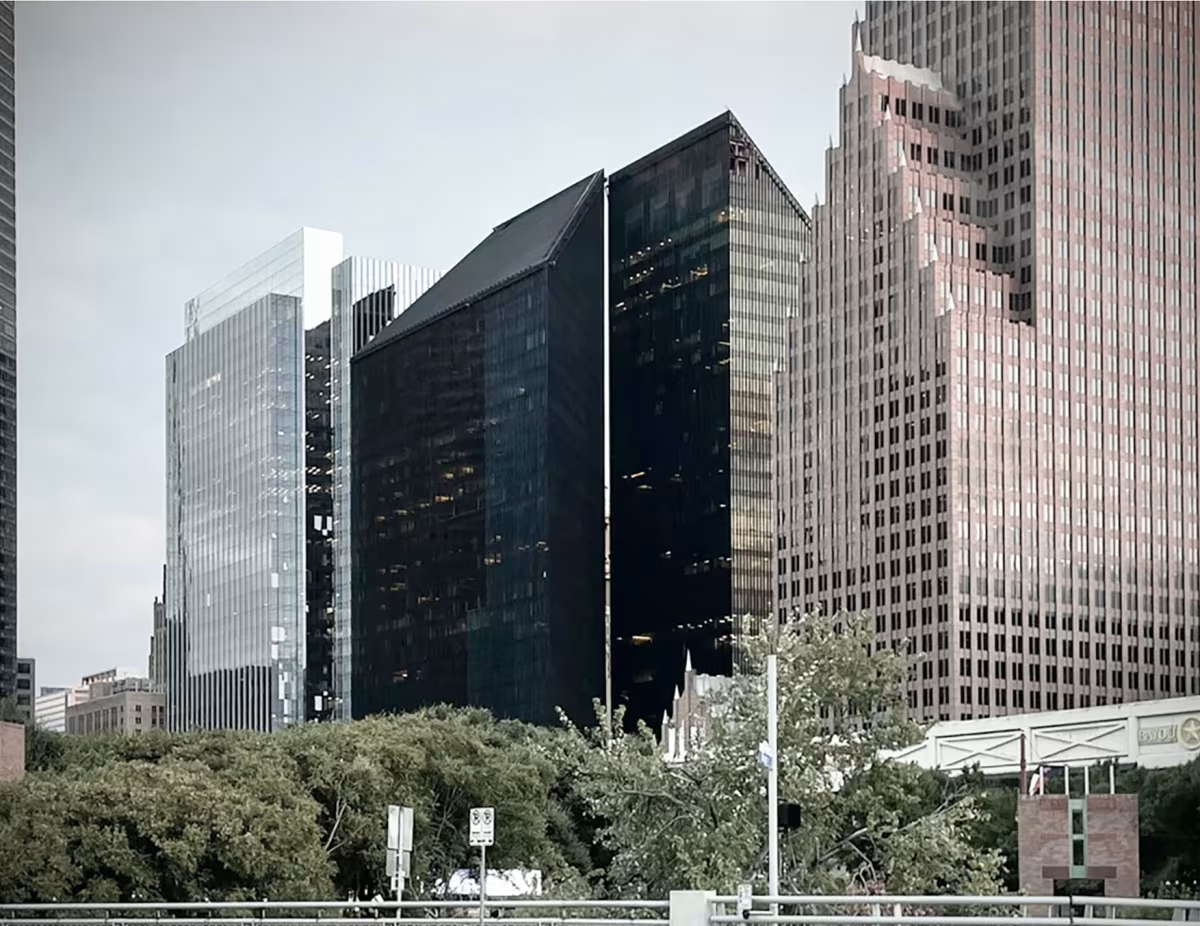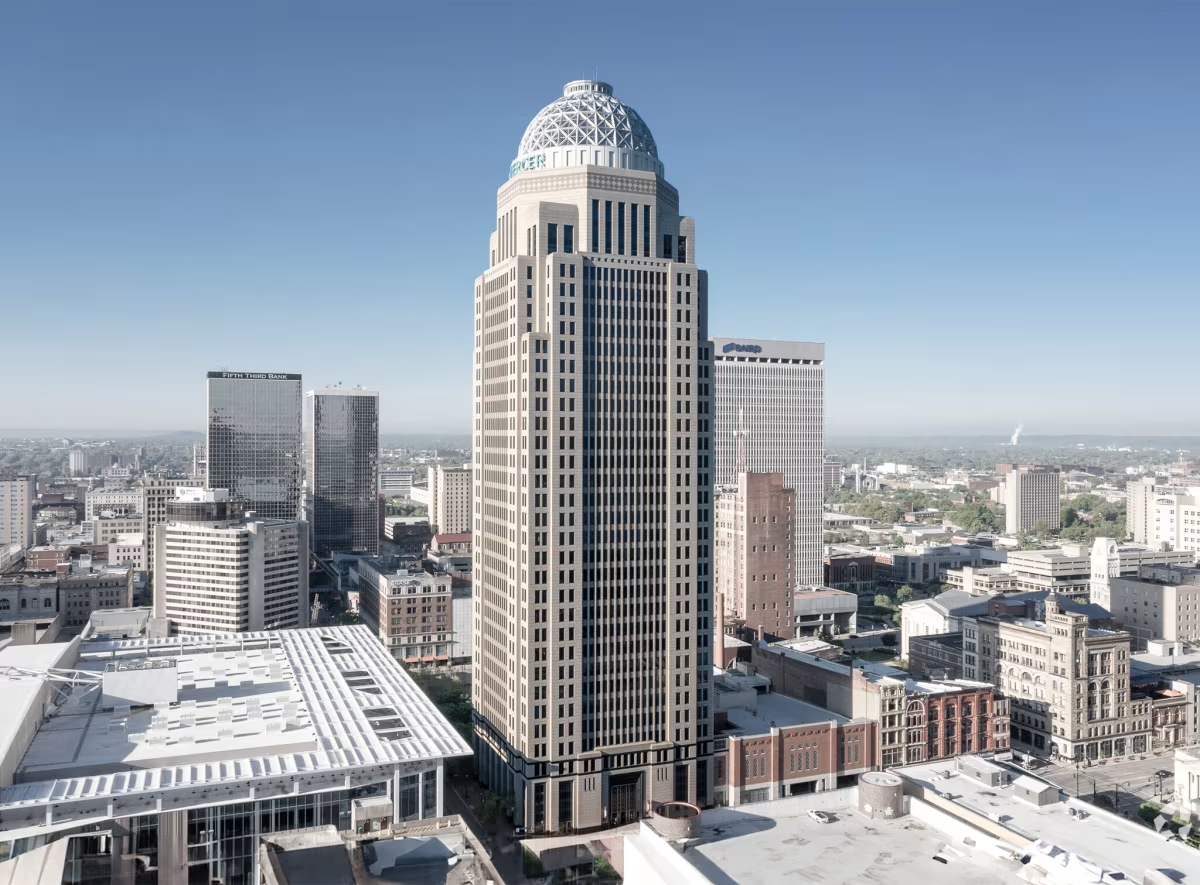Pennzoil Place vs 400 West Market


Comparing the Pennzoil Place and the 400 West Market is compelling because they were both designed by Johnson/Burgee Architects, yet they stand in different cities (Houston, TX and Louisville, KY), and were completed a decade apart.
What this will allow us to see, is how the same firm's approach adapted to different places in different periods of time.
Height & Size
These two towers present an interesting contrast in their proportions. The 400 West Market rises higher at 548ft (167m), while the Pennzoil Place reaches 522ft (159m). However, the Pennzoil Place accommodates more floors with 36 levels above ground, compared to 35 floors in the 400 West Market.
This suggests different approaches to interior space design. The 400 West Market has an average floor-to-floor height of approximately 4.8m, while the Pennzoil Place has more compact floors averaging around 4.4m each.
These different proportions likely reflect the specific needs each building was designed to serve, whether driven by zoning regulations, client requirements, or the intended use of the spaces within. The contrast shows how architects can achieve different spatial experiences even when working with similar overall building scales.
Architectural Style
Both the Pennzoil Place and the 400 West Market were designed in line with the aesthetic conventions of the Postmodernism style.
The 400 West Market was designed at a moment when the Postmodernism style was already in decline, making it more of a lingering expression of the movement. In contrast, the Pennzoil Place was built when the style still carried greater cultural weight.
Uses
Both the Pennzoil Place and the 400 West Market were designed to serve as commercial towers, and that has remained their main use since their completion, serving similar roles in the urban fabric.
Both towers provide significant parking capacity, with Pennzoil Place offering 525 spaces and the 400 West Market offering 789.
Structure & Facade
Both towers share the same structural solution, a Frame system.
A frame structure uses a grid of columns and beams to carry the building's loads. This frees the walls from structural duties, allowing for flexible floor plans and larger windows.
However, when it comes to the facade, both buildings use different approaches. The Pennzoil Place uses a Curtain Wall facade, while the 400 West Market uses a Modular facade.
A Curtain Wall facade like the one seen in the Pennzoil Place uses a lightweight glass curtain wall hung from the structure, while a modular facade like the one seen in the 400 West Market employs prefabricated panels, often mixing solid surfaces with smaller windows.
| Pennzoil Place | 400 West Market | |
|---|---|---|
| Johnson/Burgee Architects | Architect | Johnson/Burgee Architects |
| 1973 | Construction Started | 1991 |
| 1975 | Year Completed | 1993 |
| Postmodernism | Architectural Style | Postmodernism |
| Commercial | Current Use | Commercial |
| 36 | Floors Above Ground | 35 |
| 159 m | Height (m) | 167 m |
| Frame | Structure Type | Frame |
| Concrete And Steel | Vertical Structure Material | Reinforced Concrete |
| Concrete And Steel | Horizontal Structure Material | Steel And Concrete |
| No | Facade Structural? | No |
| Aluminum, Glass | Main Facade Material | Glass, Steel, Granite |
| Gerald D Hines Interests | Developer | Gerald D. Hines Interests |
| TX | State | KY |
| Houston | City | Louisville |
| 700 Milam Street | Address | 400 West Market Street |